
This is the first of a series of posts putting early drafts of short, illustrated children’s books I’m working on “out there” to get early feedback. I’m not sure if it counts, but Patton’s Chair is already posted here. Please leave a comment or email me with your suggestions—what you like or think I might try next, what works or doesn’t, whatever.
Within my Where the Wilde Thinks Are illustrated children’s book series translating cutting-edge social science for a broad audience to make world peace through art—there are three groups of books. The books I want to write—which are perfect and flow fully-formed from my head, the books I am brainstorming how to write—which are a bit clunkier in applying research and are not flowing fully-formed from my head, and the books I have written—which are imperfect, don’t contain citations or exercises, and don’t even obviously apply research.
Nothing ever feels good enough to share. So I’m asking for feedback on what I have now, while I continue working on the concept in my head, and the brainstorming and drafts on paper—trying to structure before drafting the next one in the series, on policing, and illustrate the other already-written one, on home.
My readers are smart, and I want your ideas and opinions. Please leave feedback in the comments, or email me.
It’s not a finished product—I don’t even have my proper art supplies or studio on my year-long art-travel experiment—but how can this be better? How can I take even one step towards making this thinglet into the thing I’m trying to make—what is the next step? Or what direction could I take it in that you’d like to see, just as an experiment?
Potential for Profit and Interactivity Online
I’ve been thinking and writing a lot, on my previous blog and this one, about how to combine art and technology in new ways to counter online hate group recruitment, especially in terms of combatting the (un)Islamic State ons social media. The (un)Islamic State is using social media to recruit and propagandize. Artists and intellectuals have a responsibility to use it better, to make the world feel safe to flourish.
Here are some ways this book concept might work as a business venture and interactive online/real-life tool for countering hate in this context:
– Profit potential as book, ebook, original art through my Etsy store (once I’ve made the oil painting versions of the illustrations), and art merchandise (through a manufacturer with a better profit margin than Zazzle—perhaps through creating art supply kits with supplies for walking through positive psychology exercises like the ones I wrote about earlier this week, drawing from the book, using materials from wholesalers in under-valued markets like India and Greece).
– Responding to the meme-ification of terror and the emblematic nature of the (un)Islamic State’s flag by meme-ifying a sort of inverse IS flag. Where theirs is black with a white mock-up of what’s meant to be the Prophet Mohammed (pbuh)’s seal and the Shahada, an orthogonal sort of inverse might look like this—

Which memifies cos you can modify it in the spirit of the story to riff on the Shahada respectfully while emphasizing the freedom of conscience and expression the (un)Islamic State denigrates, like so:
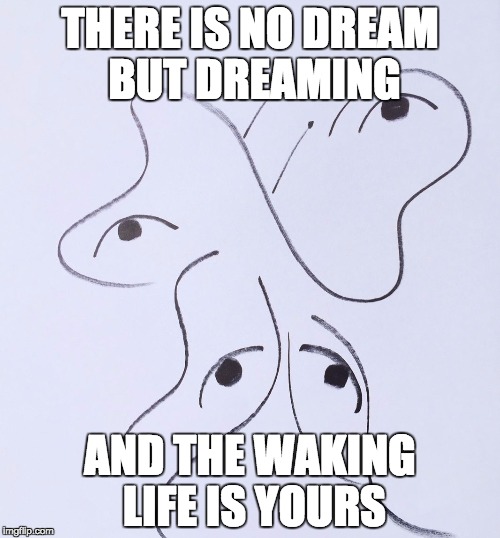
Although to be fair, Jordan beat me to it. And their new flag is pretty cool.
– Another way of both monetizing and making this idea interactive because interactive art is more fun, is to put together and sell art kits that let people make their own State of Peace flags based on this simple design. That way there is a symbol answering the (un)Islamic State’s flag that has visual continuity—but that also embodies the freedom of expression and diversity that their form of extremism denigrates.
Potential Next Steps
I keep getting stuck trying to validate ideas like this in the marketplace. But potential next steps in doing that are to:
– Crowdfund the creation of the book, product line, and website. This might mean designing a Kickstarter campaign, which stock advice says takes two to six months to prep.
– Continue researching how to self-publish, and experiment with doing it with other books (like the poetry book I have written that’s ready to roll).
– Experiment with drop-shipping art supplies on Etsy immediately, since this might be a way to immediately monetize my art business while developing projects like this. I am not sure how to break this down, but think I’m making headway on it.
And anything else you suggest.
Without further ado—the draft.
What Kind of Bird Am I?
It was dark in the forest. But Larkspur didn’t mind. She was used to living in darkness. Darkness was where wings grew.
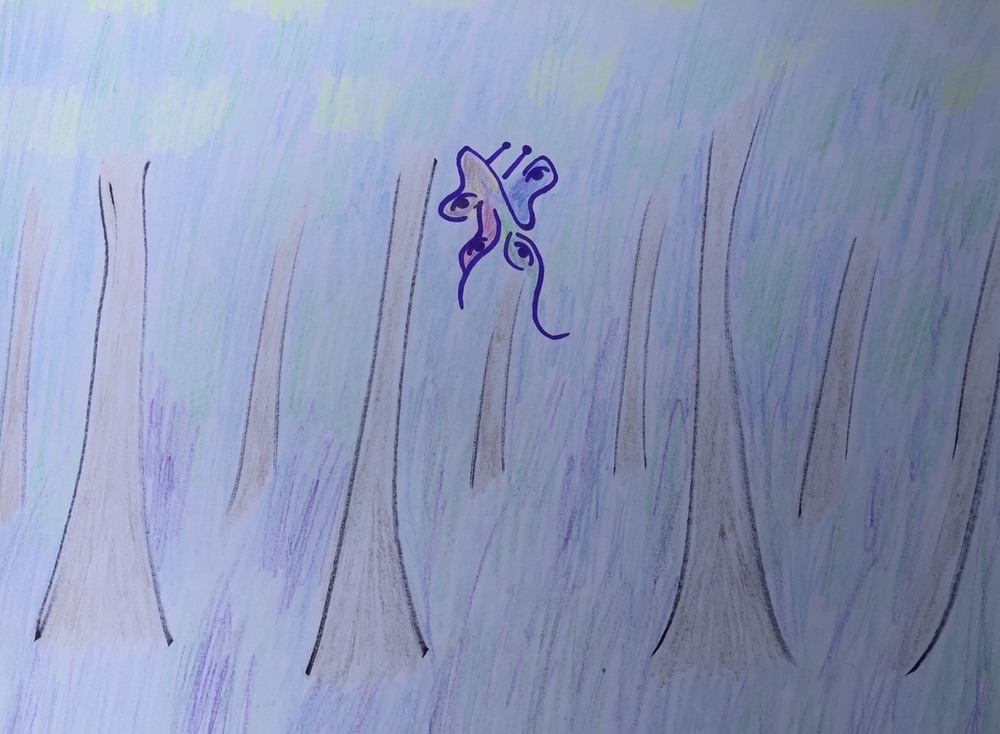
She wanted to find her nest though! She looked around for help.
“Sweet Moon. Why can’t I find my nest?” Larkspur asked.
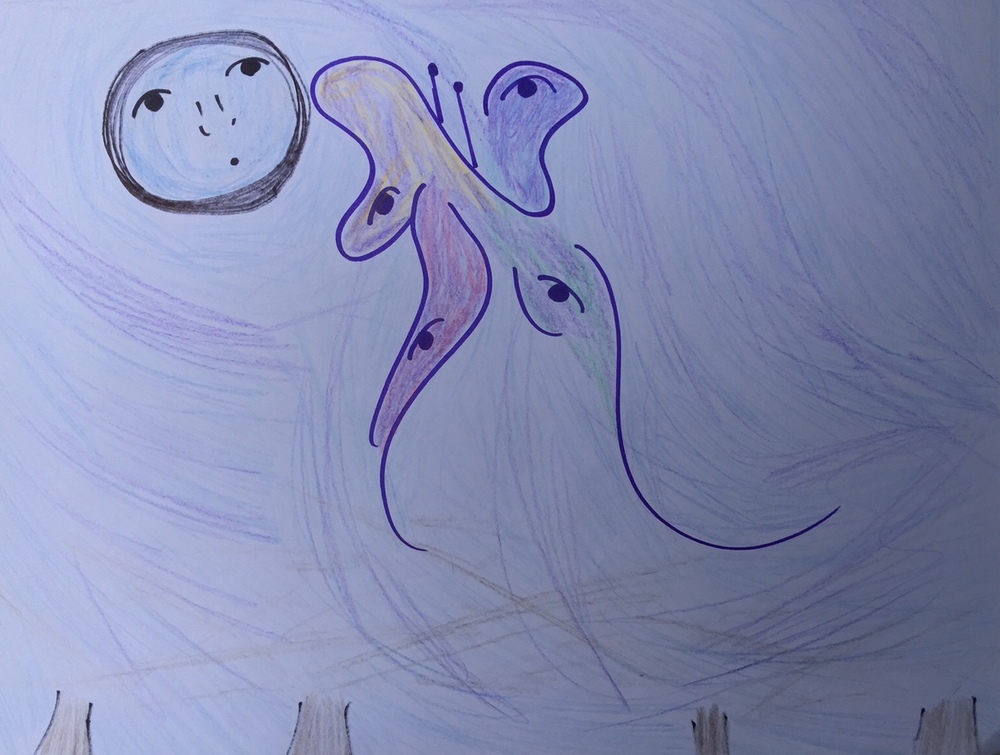
“That depends entirely, my friend. What kind of strange bird are you?” Sweet Moon replied.

“I don’t know. No one has ever asked me that before.”

“Well, there’s your problem. You can’t find your nest if you don’t know what kind of bird you are!”
And with that, Sweet Moon sighed into the morning sky and was gone.
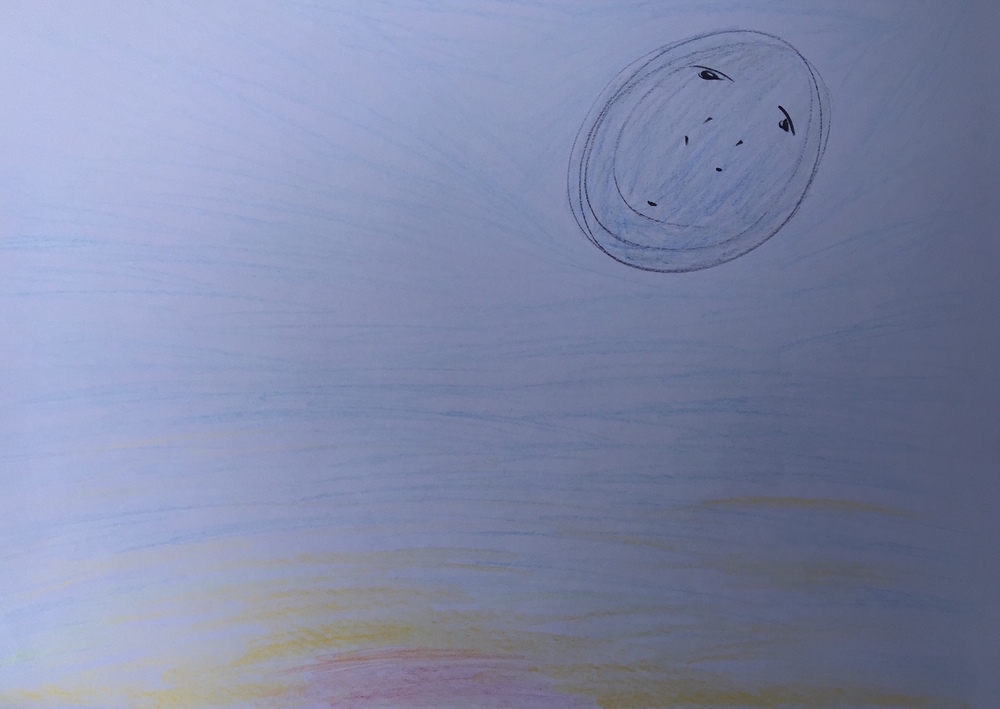
So Larkspur flew on. She stopped at the first tree that seemed almost familiar. There was a nest in the tree. It was filled with ashes and the wings of a firey bird.
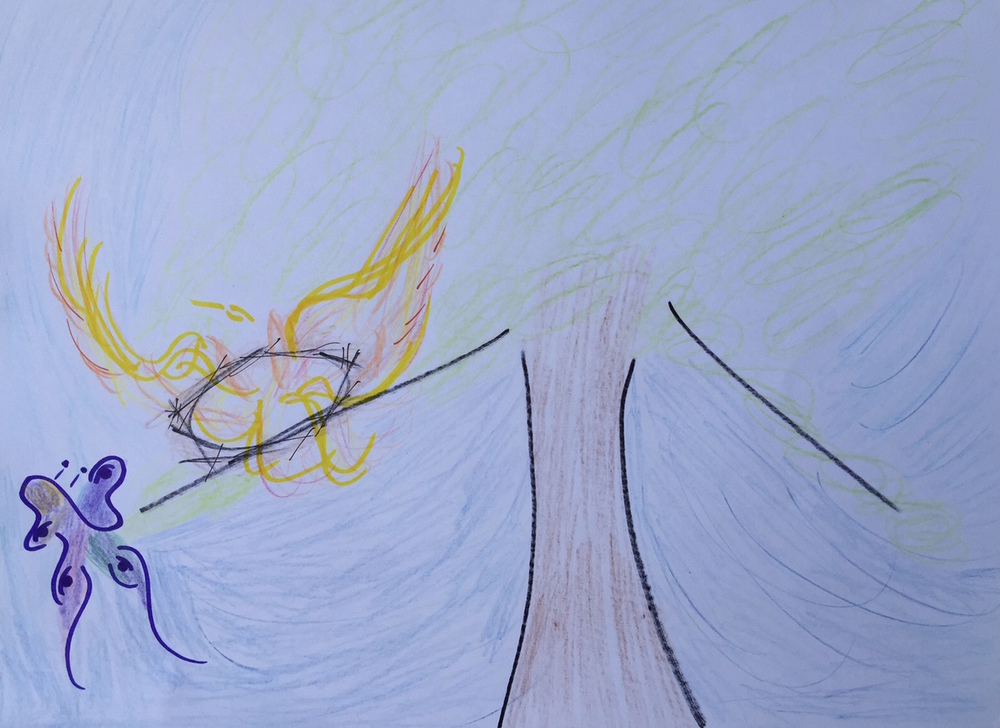
“What kind of bird are you?” Larkspur asked.
“I am Phoenix,” Phoenix replied, shaking ashes from her eyes.
“What’s a Phoenix? Am I a Phoenix, too?”
“A Phoenix rises from the ashes and flies again into the fire of the Sun,” said Phoenix. And with that, she rose from the ashes and flew into the Sun, her firey tail blazing across the sky behind her.
Larkspur watched her. She was beautiful. But ashes and Sun didn’t feel like home. So Larkspur flew on.
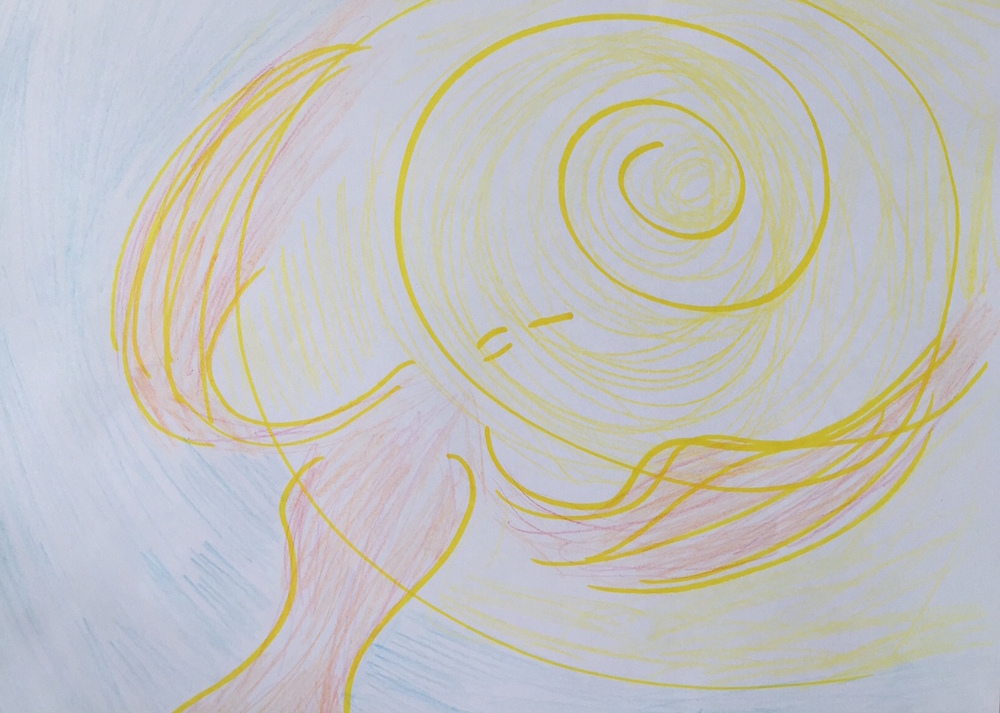
Before long, she came to another tree that seemed almost familiar. In the tree there was a nest, and in the nest there was a bird.
“Honk!” said Gestalt Goose, before Larkspur could say a word.

“What does that mean?” said Larkspur, fluttering in confusion.
“Everything and nothing,” replied Gestalt Goose.
“Oh,” Larkspur replied. “And what kind of a bird sings everything and nothing?”
“I am Gestalt Goose,” said Gestalt Goose..
“What’s a Gestalt Goose? Am I a Gestalt Goose, too?”
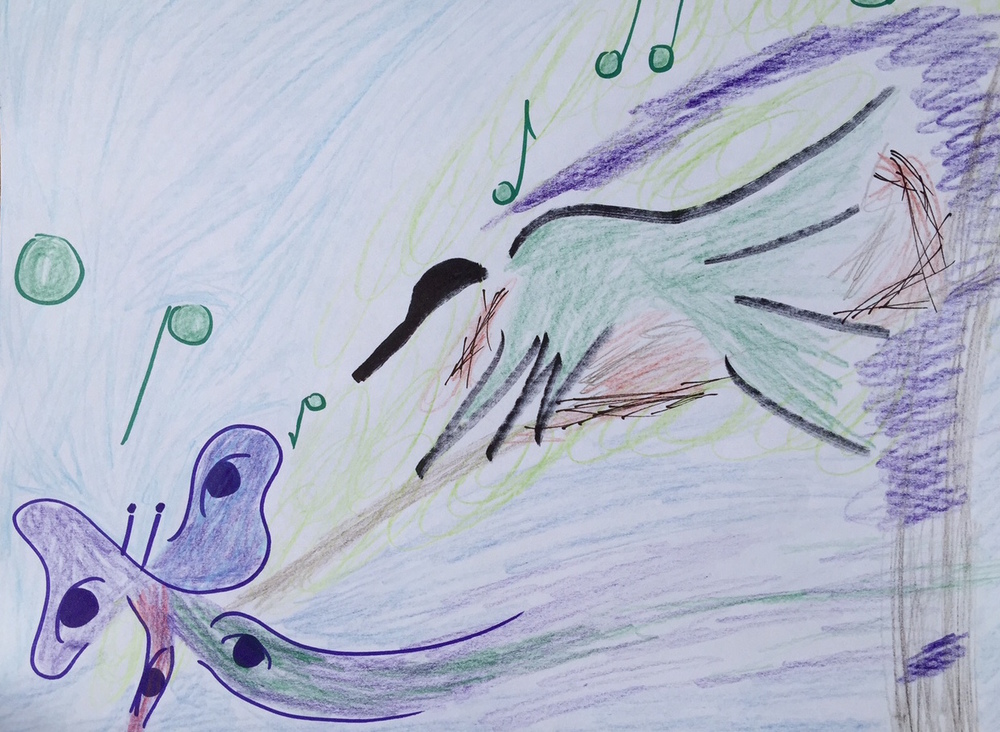
“Only you know that. You know by knowing.”
“When? How” Larkspur asked.
“A Gestalt Goose first understands nothing. And then, in a flash of insight, understands everything! Honk, honk!” And with that, Gestalt Goose took flight in a flash of iridescence and song.
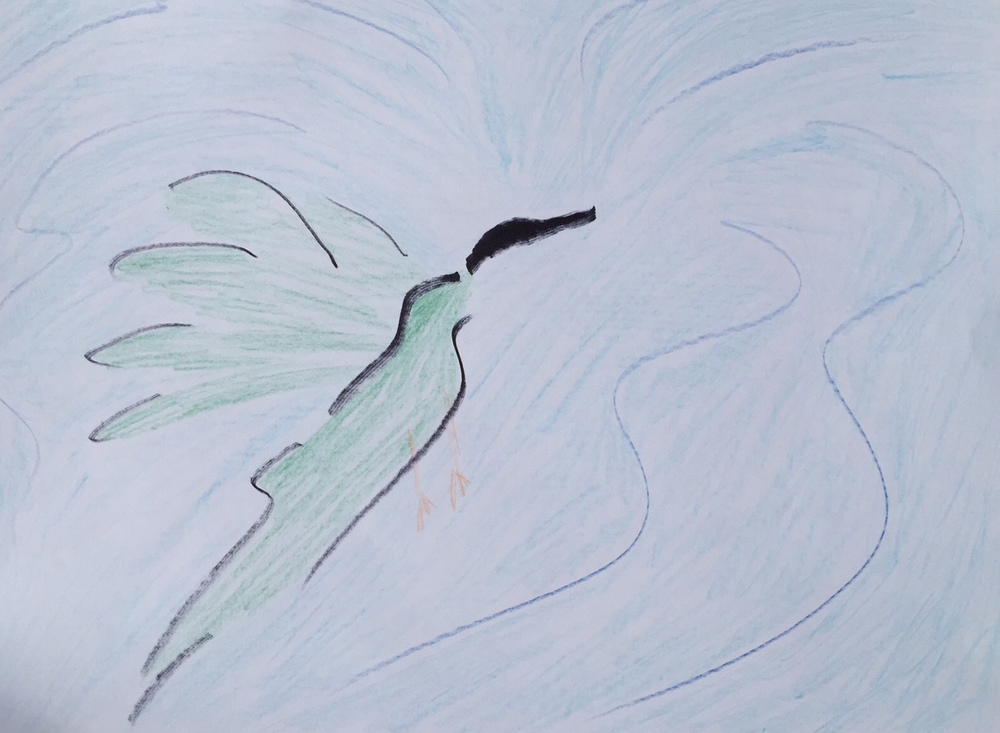
Larkspur watched him. He was beautiful. But honking didn’t feel right for her. So Larkspur flew on.
Before long, she came to another tree that seemed almost familiar. In the tree there was a nest, and in the nest there was a very small and homely bird.
“Quack,” said the very small and homely bird, before Larkspur could say a word.
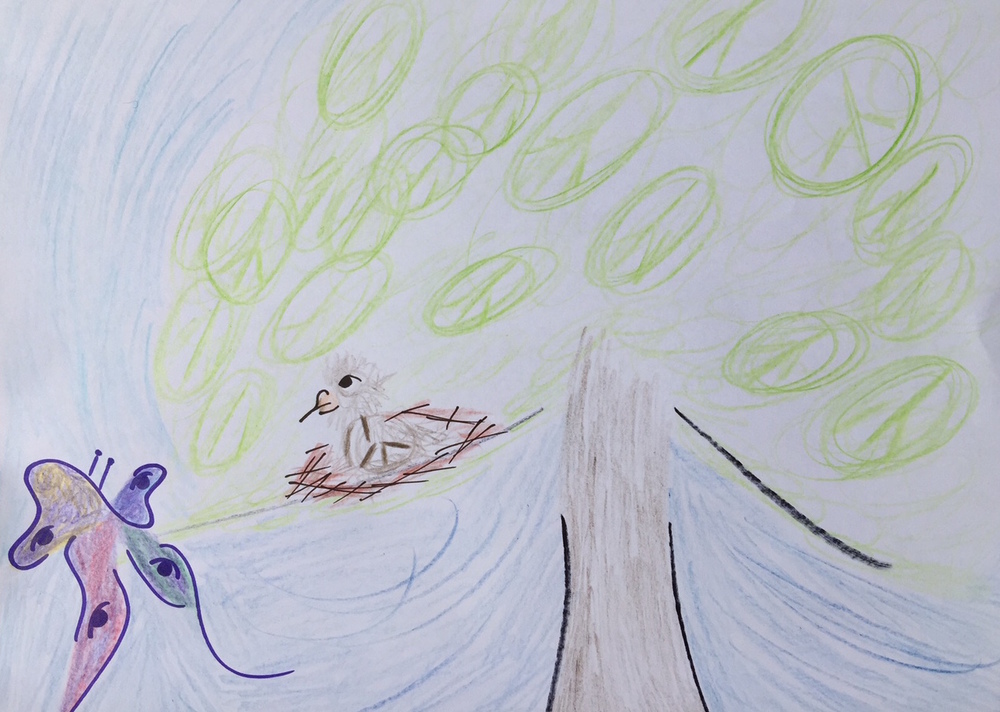
“Who are you and what does that mean?” said Larkspur, more confused than before.
“They call me Ugly Duckling,” said the bird. “Quackery is my art. It’s what sets me apart.”
“What sort of art is that?” Larkspur asked.
“Quackery is learning. Quackery is love of falling. Quackery is doing your own thing no matter what other people say. And keeping the faith that —even if you don’t know it yet—you will find your own way.”
And with that, Ugly Duckling flew off in a symphony of fluff and quacking.

Larkspur watched him. He was strange but beautiful. Yet quacking didn’t feel right for her. So Larkspur flew on.
Before long, she came to another tree that seemed almost familiar. In the tree there was a nest, and in the nest there was a bird.
“Hello!” said Larkspur. “What’s your song? What kind of bird are you, and could I be one of you? Shall I sing along?”
“Hello, dear. I am Blackbird. I sing in the dead of night. You can sing along if you love dancing in the light.”
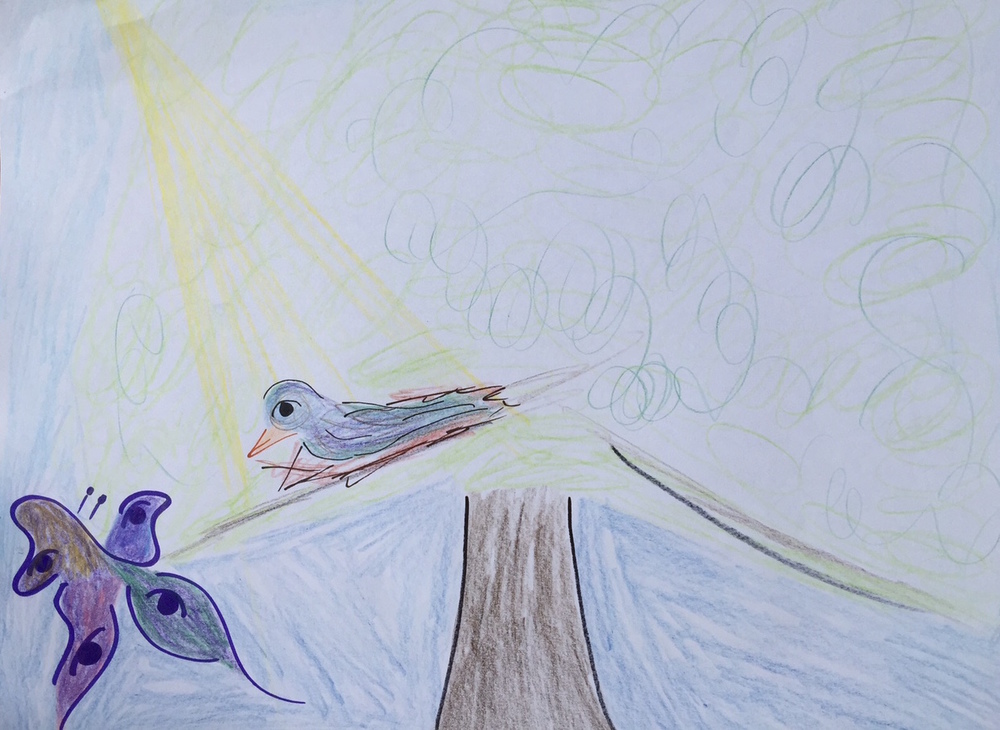
“Hmm. I grew wings in darkness,” Larkspur replied. “But I don’t sing in the dead of night. And I’m not sure what it means to dance in the light. What kind of bird am I?”
“I don’t know. But you’ll find out eventually—as long as you stay in flight,” Blackbird smiled. And with that, she flew away in a flash of song and light.
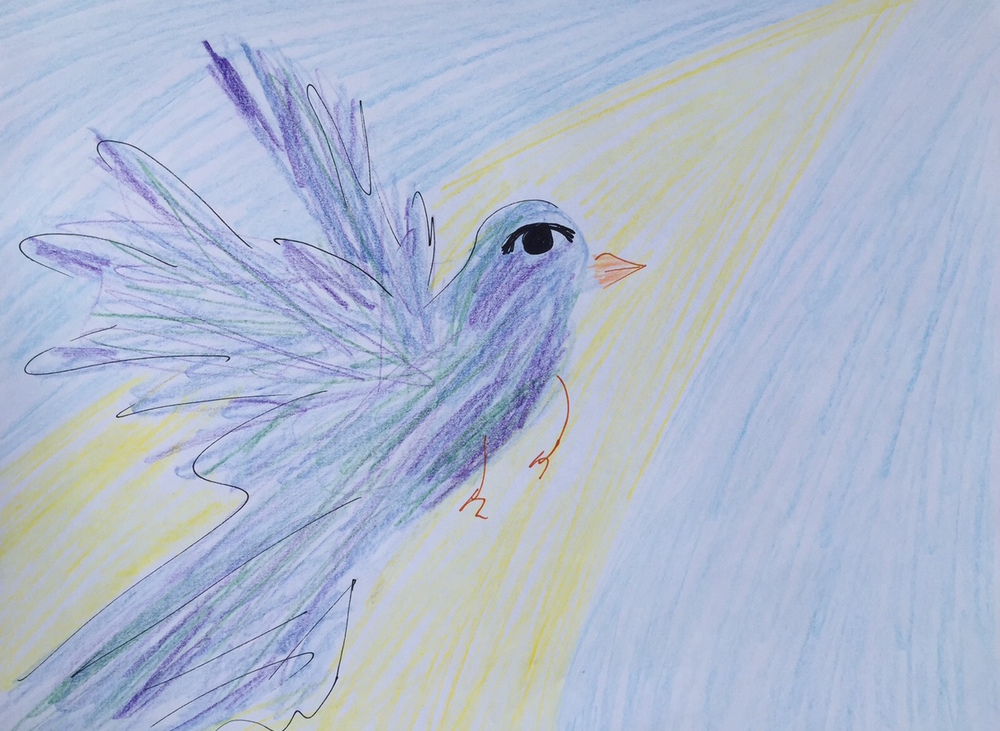
Larkspur watched her. She was small, dark, and very, very delicate. But very, very strong.
With that, Larkspur flew on.
Before long, she came to another tree that seemed almost familiar. In the tree, there was a nest. And in the nest, there was a rather large and bright bird.
“Fluff!” said Peacock, before Larkspur could say a word. And with a fluff and a puff, he grew four sizes and fell out of the tree.
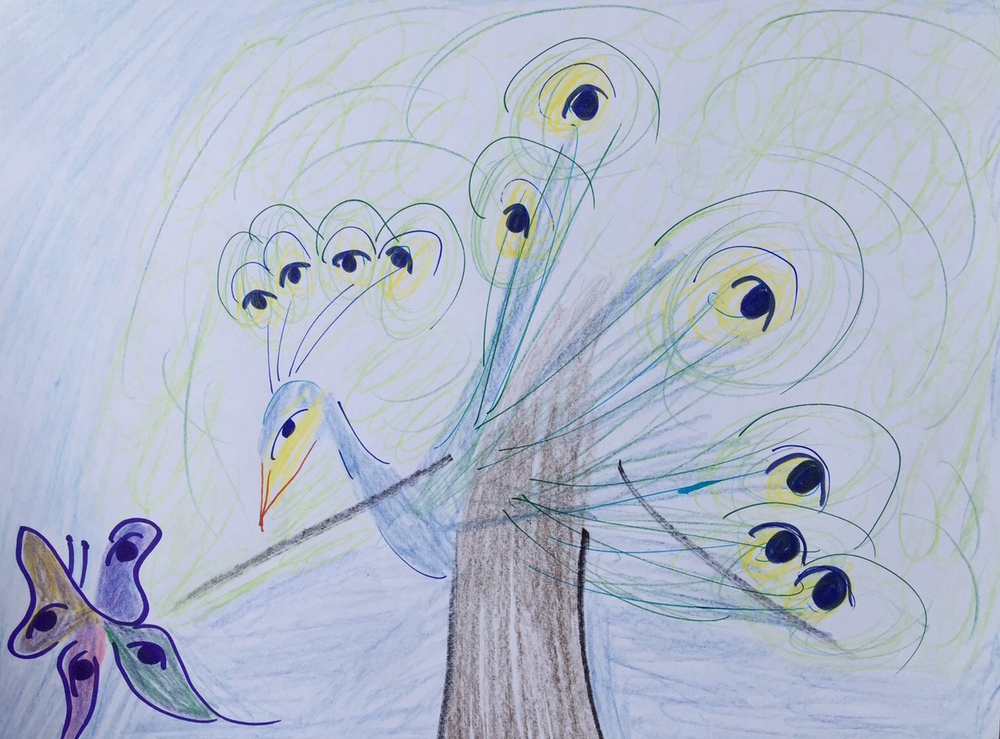
“Fluff, fluff!” he continued, landing on his feet and strutting around the base of the tree.
“I see,” Larkspur giggled.
“Aren’t you going to ask about me?” Peacock demanded.
“Yes, of course!” Larkspur replied, although she knew she wasn’t his type of bird.
“What kind of bird are you?”
“I am the best kind of bird there is!” Peacock replied.
“I huff and I puff and I spread my feathers wide. I am Peacock, master of birds, our entire species’ pride!”
And with that, he strutted off into the forest before Larkspur burst out laughing.
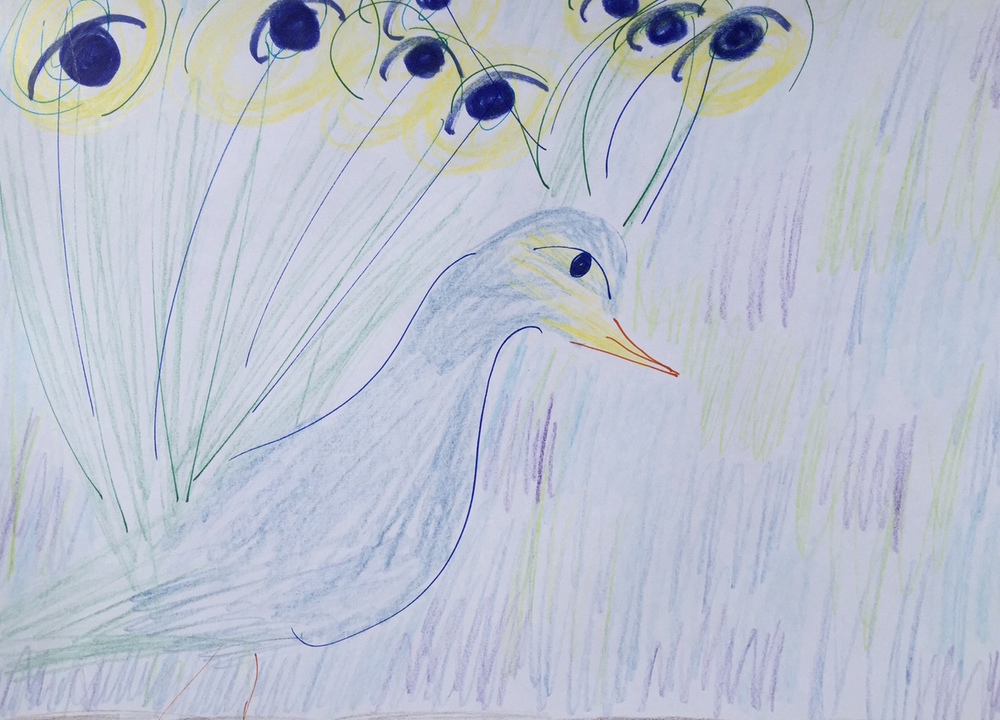
With that, Larkspur flew on.
Before long, she came to another tree that seemed almost familiar. In the tree, there was a nest. And in the nest, there was another very brightly-colored bird. He was sitting very still with his head tilted to the side, as if waiting.
“Hi,” said Larkspur.
“Hi,” said Parrot.
“What kind of bird am I?” said Larkspur.
“What kind of bird am I?” said Parrot.
“Well yes, that would be a fine place to start,” said Larkspur.
“To start,” said Parrot.
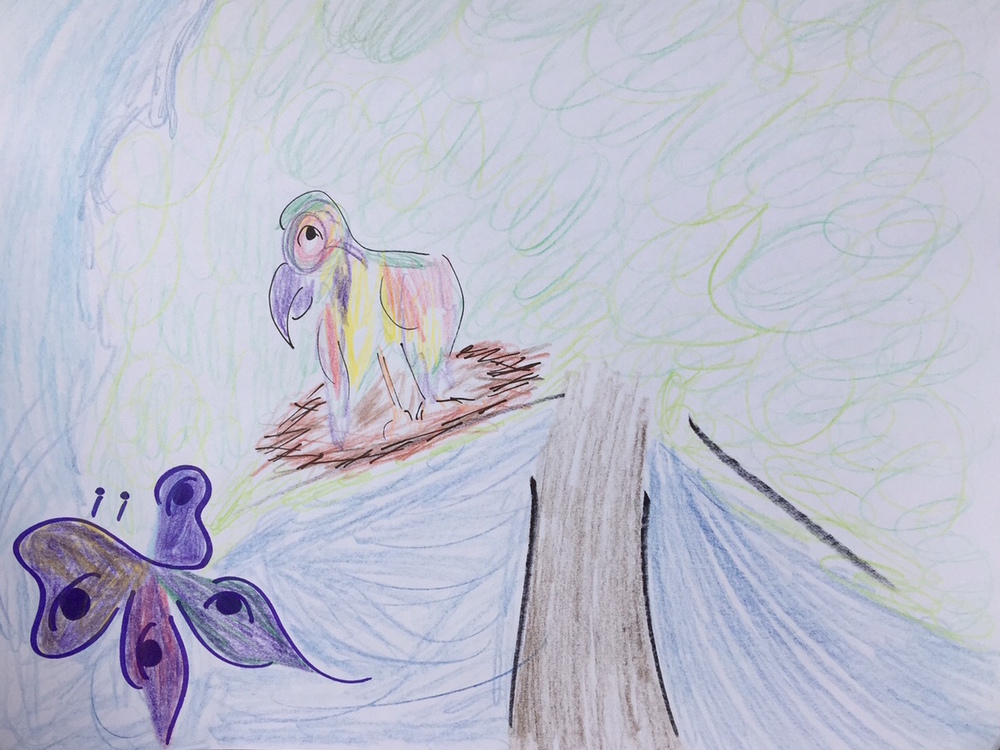
“Yes, to start! That’s all I want,” said Larkspur.
“All I want,” said Parrot.
“Yes of course, what is it that you want?” said Larkspur.
“You want,” said Parrot.
“I do,” sighed Larkspur. “I want to know what kind of bird I am, and to find my nest! But I guess I have to keep flying on.”
“Keep flying on,” said Parrot. And so she did.
Before long, she came to another tree that seemed almost familiar. In the tree, there was a nest. And in the nest, there was another very brightly-colored bird. She was standing very still with one leg up on her other leg.
“Hi,” said Larkspur. “You look like a dancer!”
“I am a dancer!” said Flamingo. “I dance color and stillness.”

“That’s lovely,” sighed Larkspur. “But I know I dance motion. And I’m trying to figure out what kind of bird I am. But it’s got to be a different type.”
“True enough,” said Flamingo. “But it never hurts to know what you’re not.”
“You’re right,” said Larkspur. “What kind of bird are you?”
“I am Flamingo,” said Flamingo. And with that she pirouetted out of the tree and towards a nearby marsh.
“Flamingo,” said Larkspur, dreamily. “You were a beautiful dancer.”

With that, Larkspur flew on.
Before long, she came to another tree that seemed almost familiar. In the tree, there was a nest. And in the nest, there was a very large and strange bird. Larkspur drew nearer to see him.
“Hissssss,” said Quetzalcoatl.
Larkspur flew back with a start.
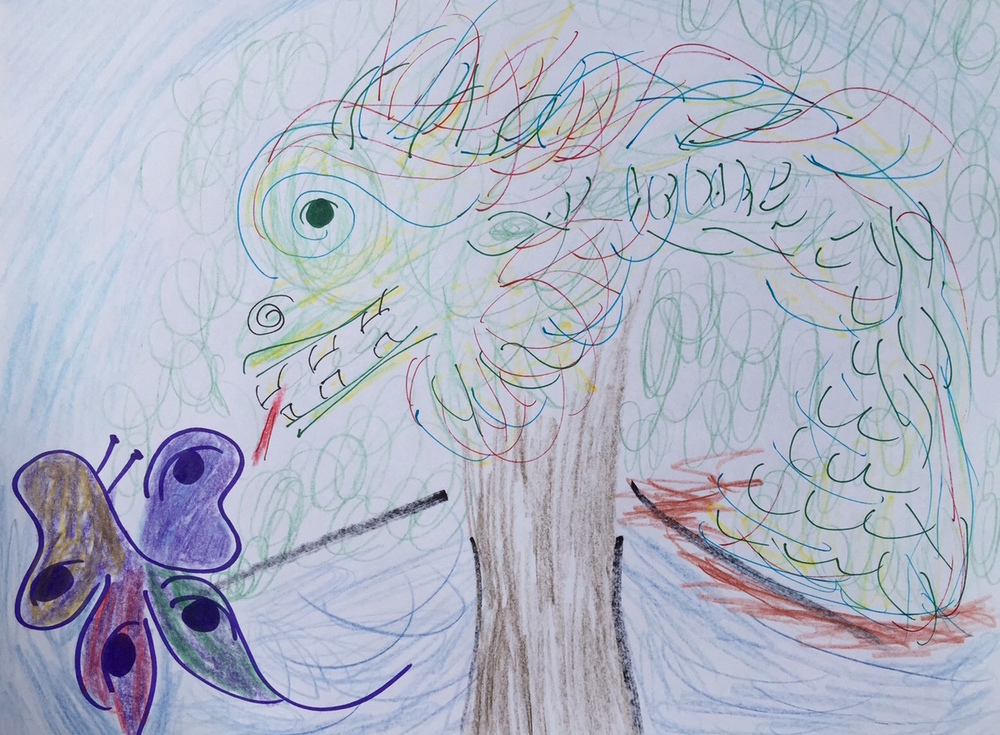
“Why do you make that sound?” said Larkspur, keeping her distance.
“It’s just what I do,” said Quetzalcoatl. “Some birds are birds of song, and love to play. Some birds are serpents who hunt and eat their prey.”
“I see,” said Larkspur, flying away quickly.
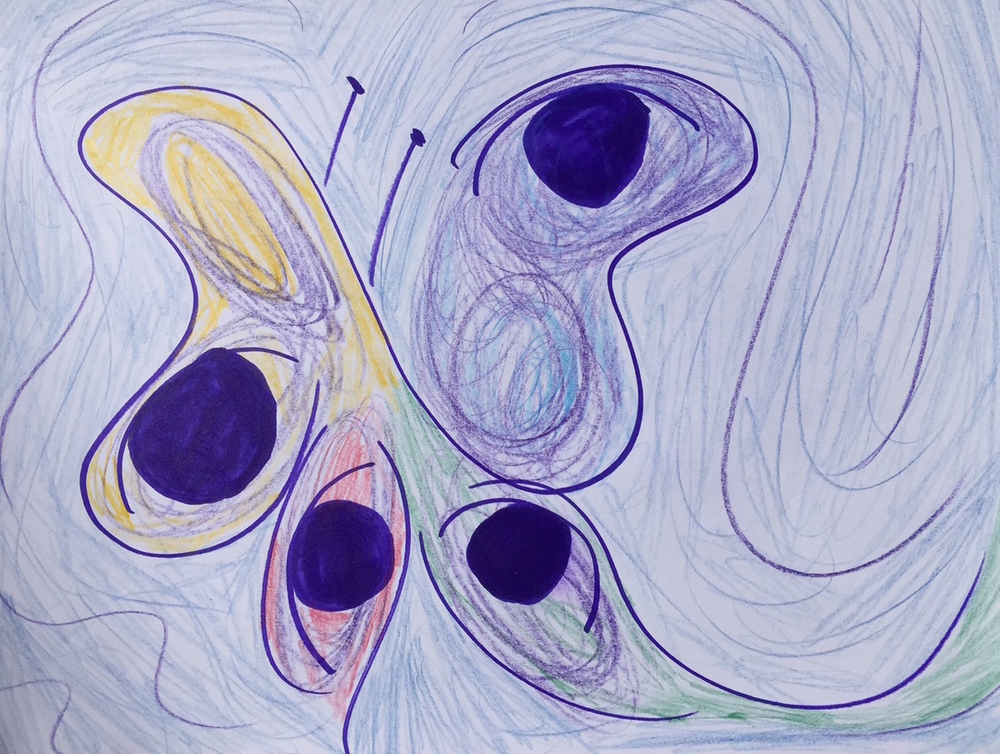
Before long, she came to another tree that seemed almost familiar. In the tree there was a nest, and in the nest there was a very hairy bird indeed.
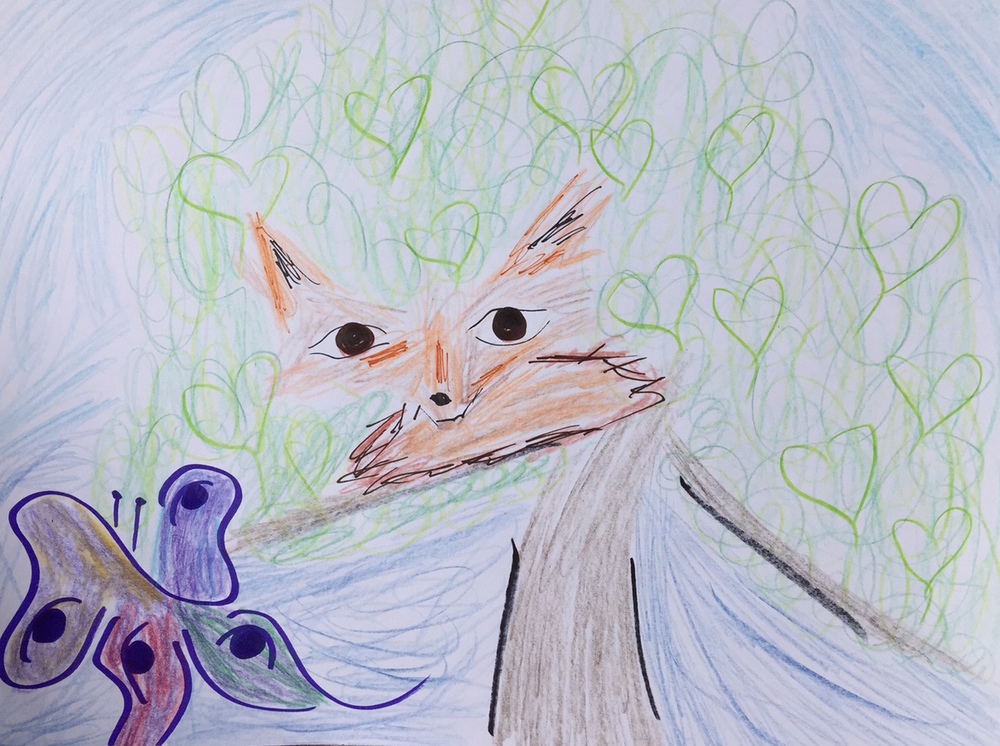
“What kind of bird are you?” Larkspur asked.
“I am Fox,” laughed Fox. “But be quiet about it. I’m up in this tree for a reason.”
“Do Foxes not normally live in trees?” Larkspur asked.
“Only Magic Trees,” Fox replied.
“Oh,” Larkspur said. “Is this a Magic Tree?”
“It is now,” Fox smiled, carving a heart in the bark with her bare claws.
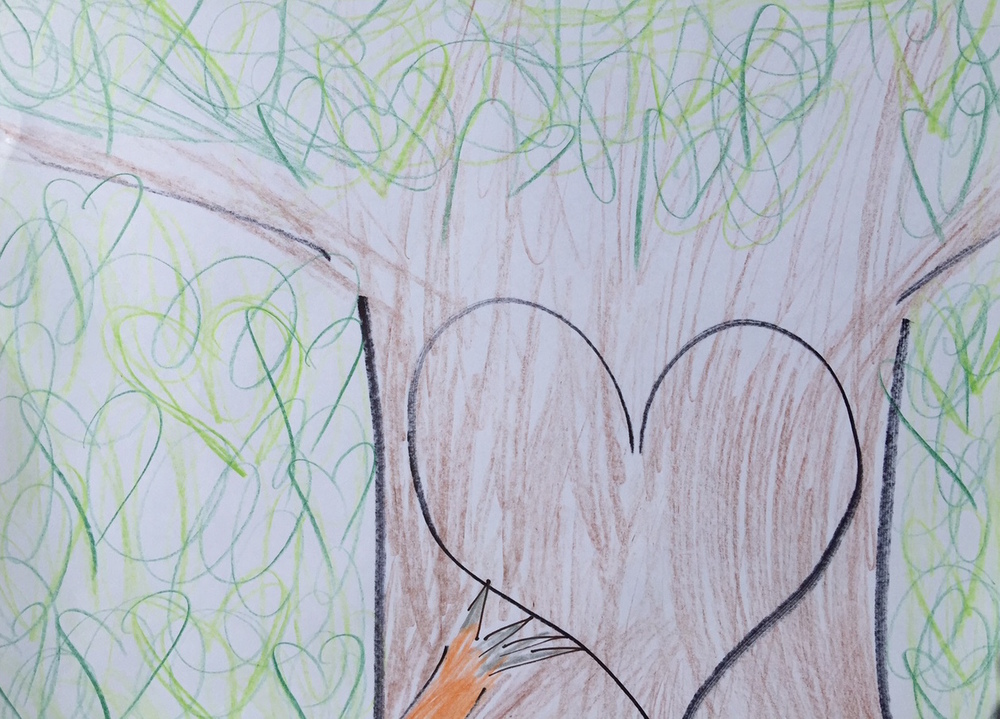
Larkspur smiled. “That’s very pretty. But what kind of bird is a fox?”
“No kind of bird at all,” said Fox.
“I see,” said Larkspur. “I guess I had better head on.”
And she did.
Before long, she came to another tree that seemed almost familiar. In the tree there was a nest, and in the nest there was an even hairier bird.

“What kind of bird are you?” Larkspur asked.
“I am Monkey,” laughed Monkey, hanging from his tail.
“Could I be a monkey, too?” Larkspur said.
“Only if you have a tail to hang from,” Monkey said.
So Larkspur tried hanging from her tail. But she could only really flutter there, and being upside-down didn’t feel quite right.
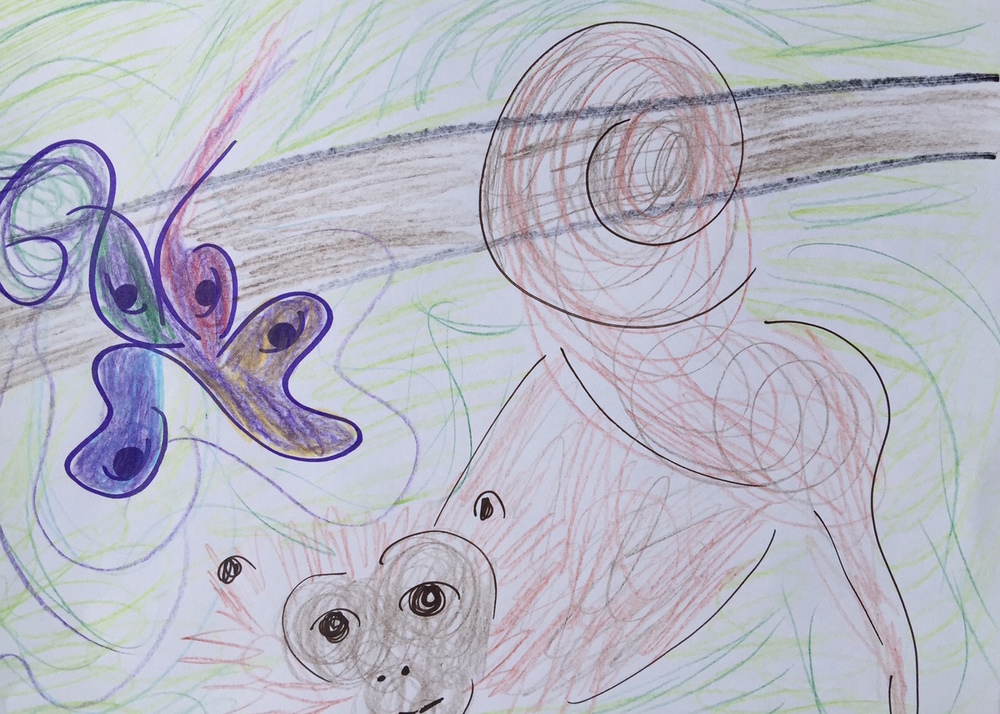
“I guess I’m not a monkey kind of bird,” Larkspur sighed. “But what kind of bird am I?”
“If you can’t find the right answer, then maybe you’re not asking the right question,” Monkey shrugged.
“Maybe,” Larkspur nodded. “But I have to keep asking anyway,” she said. And she flew on.
Before long, she came to another tree that seemed almost familiar. In the tree, there was a nest. And in the nest, there was a very large, bright, strange, and hairy bird.
“Butterfly!” said the Little Boy, before Larkspur could say a word.
And he reached out a gentle hand as if to stroke her shining wings.
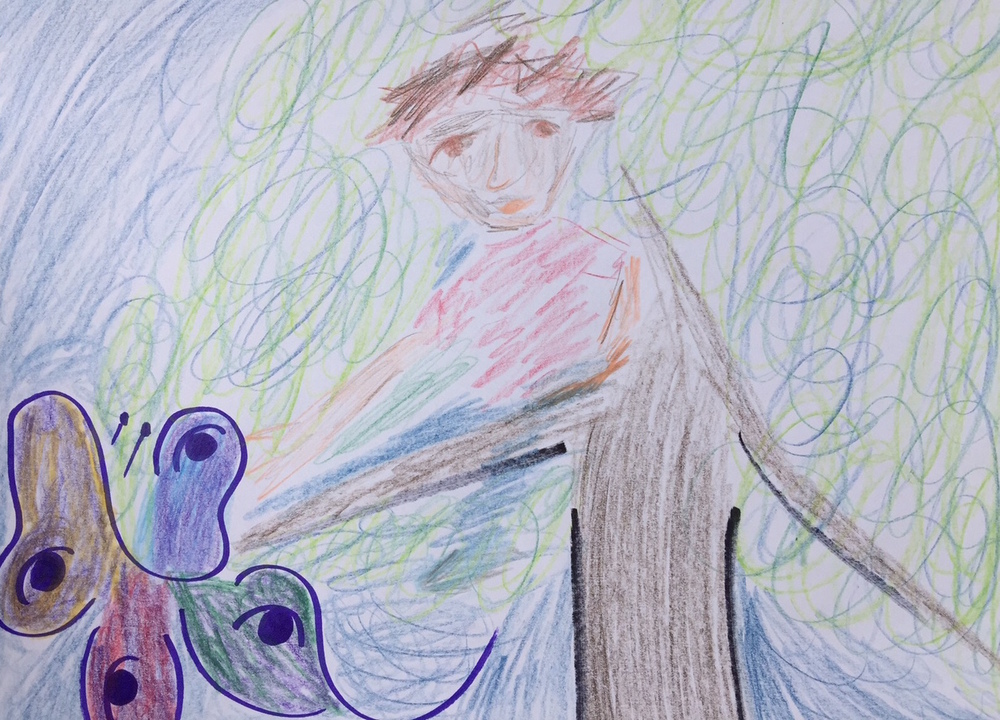
Larkspur was startled to hear him call her by a name as if he knew her. She was so startled that she drew back as he drew forward. And as she drew back, he reached closer. And as he reached closer, he fell.
How Larkspur’s heart fluttered with worry for him as he fell!
But as he fell, the Little Boy laughed. His laughter turned his falling into flying. And his flying turned his legs into wings that took him home for dinner.
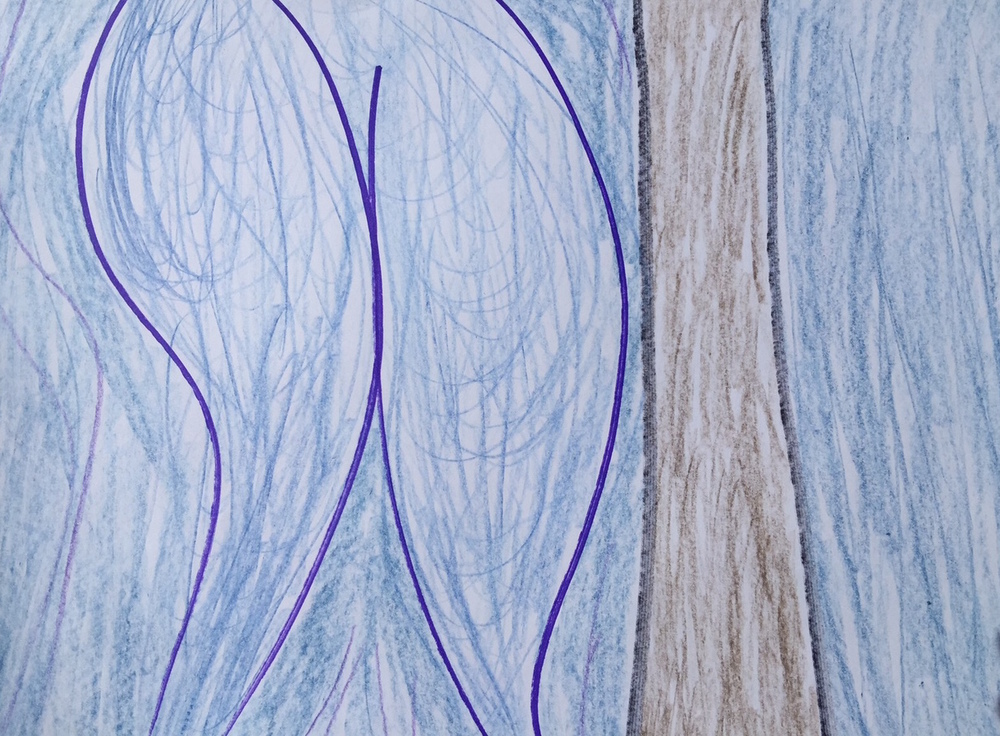

About the Butterfly Bird

The original Butterfly Bird, Quetzalpapalotl, nests in a palace at Teotihuacán—“the place where men become gods”—just outside Ciudad México. His palace is the smallest and most sacred of the three pyramids there—Sun, Moon, and Butterfly Bird. All three, massive pyramids are made of stone. The priests who visited Quetzalpapalotl had to abandon Teotihuacán after cutting down all the trees, and thus running out of water and food on the mountains. Before they had to leave, a few hundred thousand people lived there, at the heart of a flourishing, pre-Aztec empire between 100 and 700 A.D. And the Butterfly Bird was friends with them all.
What kind of bird are you?